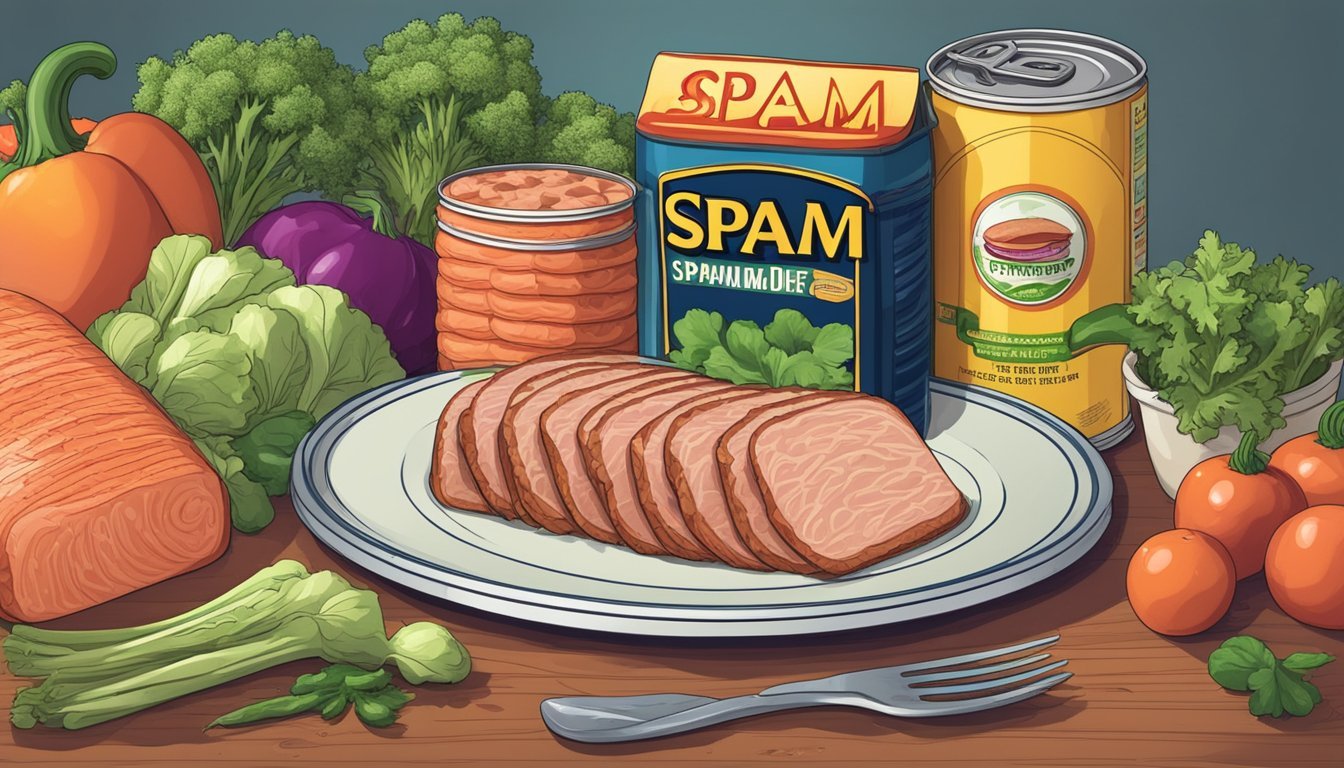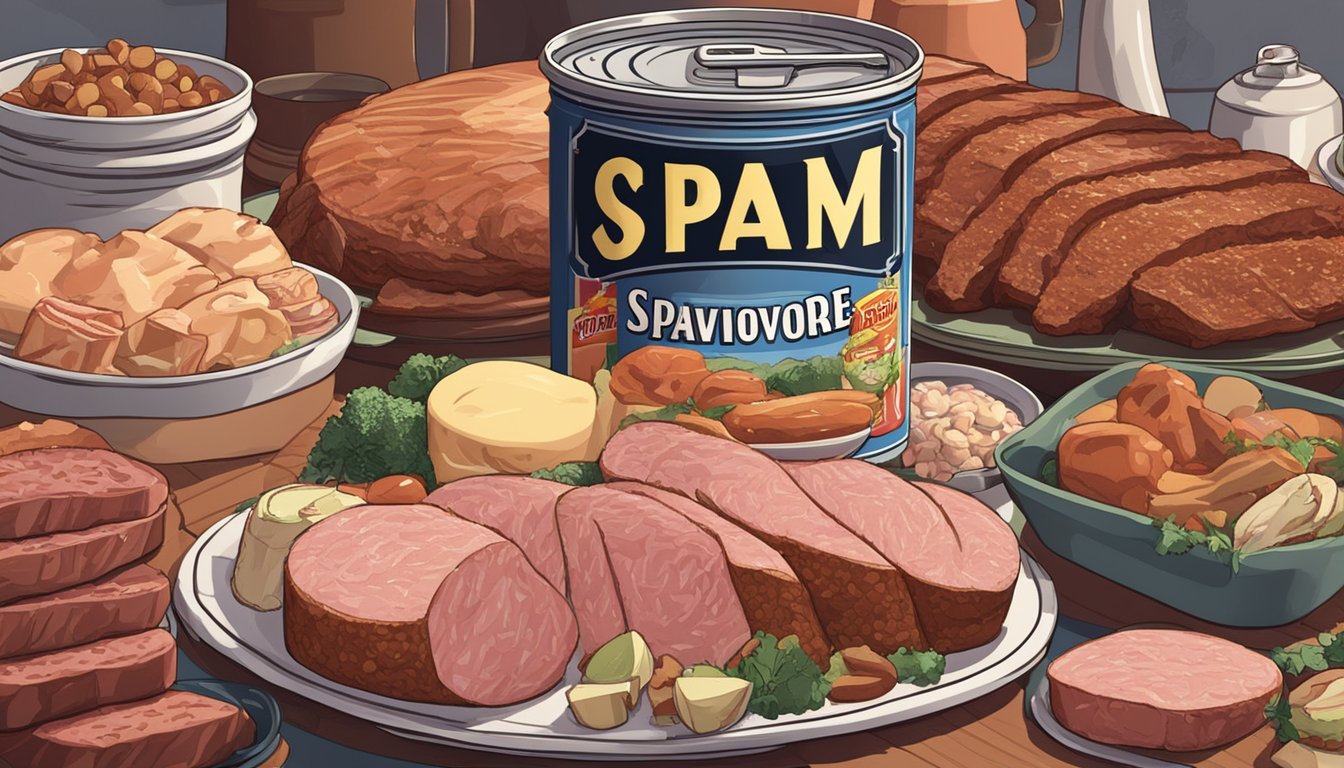Can You Eat Spam on Carnivore Diet
Assessing Processed Meats Compatibility
The carnivore diet is a regimen that involves consuming exclusively animal products and eliminates all plant-based foods. It emphasizes the intake of high-quality animal proteins and fats, including beef, pork, organ meats, seafood, eggs, and some dairy products. The focus is on providing the body with essential nutrients and energy from animal sources, making it a zero-carbohydrate diet by definition.
Spam, the canned meat product known for its long shelf life and versatility, raises questions for those considering or currently following a carnivore diet. By composition, Spam contains pork products, which aligns with carnivore diet principles. However, it also includes additives like potato starch and dextrose, which are inconsistent with the zero-carbohydrate approach of the diet.
Considering the strict guidelines of the carnivore diet, the inclusion of Spam is typically not advised. While it is a meat product, the extra ingredients deviate from the diet's ethos of consuming whole, unprocessed animal foods. Carnivore diet adherents prioritize meats that are free from added substances that could disrupt the diet's intended health benefits.
Understanding the Carnivore Diet
The Carnivore Diet is an eating plan focusing exclusively on animal products and excluding all plant-based foods. Its emphasis is on high-fat and protein consumption while maintaining the premise that humans should eat what they are naturally designed to digest.
Core Principles
The Carnivore Diet is rooted in the premise that human beings historically thrived on animal products, and modern ailments may be associated with plant-based and processed foods. The core tenets include:
High Protein and Fat Intake: Prioritizing animal products ensures a diet rich in protein and fats.
Exclusion of Plant-based Foods: No vegetables, fruits, nuts, seeds, or grains are included.
These principles are based on the goal of returning to a more natural state of human nutrition centered around animal-based food sources.
Types of Foods Consumed
Adherents to the Carnivore Diet consume a range of animal products, emphasizing those high in fat and protein. These include:
Red Meats: Beef, lamb, and other red meats are staples of the diet, valued for their high content of nutrients and fats.
Poultry and Pork: Chicken and pork, including organ meats from these animals.
Fish and Seafood: Emphasizes fatty fish which are high in omega-3 fats.
Eggs and Certain Dairy Products: Eggs are a key component; some dairy, particularly high-fat products like butter and certain cheeses, are permissible.
Common Misconceptions
Several misconceptions surround the Carnivore Diet, often stemming from its extreme exclusion of plants. Some believe it lacks nutritional variety, but proponents argue that:
Complete Nutrition: Animal products can provide a complete nutritional profile, including essential vitamins and minerals.
Processed Meats: Some assume processed meats like spam are acceptable, but these can contain additives and higher carbs, which are not recommended.
This diet is often considered fad by critics but others claim improved health outcomes when adopting an all-animal-product diet regimen.
Nutritional Profile of Spam
The nutritional content of Spam centers around its primary ingredients and macronutrient composition, which cater to high-calorie and sodium levels.
Ingredients and Macros
Ingredients: The primary ingredient of Spam is pork, sourced from pork shoulder and ham. However, it's notable for containing additional ingredients like sodium nitrite, which serves as a preservative, and potato starch, occasionally used to bind the meat.
Macronutrients:
Calories: A single 2 ounce (56g) serving of Spam provides around 174 calories.
Fat: This same serving contains 15 grams of fat, making it a high-fat food item.
Sodium: One of the most significant aspects of Spam's nutritional profile is its high sodium content, with a single serving containing approximately 767 milligrams, which is a substantial portion of the recommended daily intake.
Protein: Each serving of Spam is also rich in protein, offering about 7 grams.
Here's a small table summarizing the macronutrients in Spam per 2 ounce serving:
Calories: 174
Fat: 15g
Sodium: 767mg
Protein: 7g
It's important to consider these nutritional facts when incorporating Spam into any diet, particularly one as specific as the carnivore diet.
Health Implications
Consuming Spam on a carnivore diet brings potential health implications, both positive and negative. This section explores the balance between the benefits of a strict meat-based diet and the risks associated with consuming processed meats like Spam.
Benefits of a Carnivore Diet
The carnivore diet is praised for its weight loss and blood sugar control benefits due to low carbohydrate intake. It generally leads to a higher consumption of protein and fats, which may increase satiety and reduce overall calorie intake. Research suggests that a meat-rich diet can improve energy levels and support the immune system due to its content of essential nutrients, vitamins, and minerals.
Risks and Concerns with Processed Meats
However, processed meats like Spam can carry health risks. They are often high in saturated fat and sodium, which, in excess, are linked to heart disease, high blood pressure, and cardiovascular disease. The American Heart Association advises moderation in consumption of such meats due to their potential to increase cholesterol levels and risk of kidney disease.
Balancing Nutrition
While the carnivore diet excludes sources of vitamin C found in fruits and vegetables, meat can still provide essential nutrients. It's crucial to balance the diet between nutrient-dense meats and organ meats that contain a broad profile of vitamins and minerals, avoiding an over-reliance on processed options like Spam to reduce exposure to health risks.
If you're looking for vitamin C, buying it online is your best bet!
Incorporating Spam into the Carnivore Diet
When planning meals on the carnivore diet, one might consider including Spam for its protein content. However, mindfulness about serving sizes and preparation methods is critical for adhering to dietary goals.
Meal Planning and Preparation
Spam can be used in various meal plans on a carnivore diet, as it provides a quick source of protein and fat. Although not a substitute for fresh meats, it's convenient for those who require an easy-to-prepare protein source. For breakfast, fried Spam can complement eggs. At lunch or dinner, it can be sliced and grilled or seared with no additional ingredients to maintain dietary compliance. It is versatile and can be incorporated into various simple recipes that align with carnivorous eating principles.
Appropriate Serving Sizes
A serving size of Spam is generally about 2 ounces (56 grams), which fits within the parameters of a carnivore diet when considering snack portions or as part of a larger meal. Its fat-to-protein ratio makes it a satisfying option, yet portion control is key due to its sodium content. While the focus on a carnivore diet is often on fresh, unprocessed meats, Spam can be included occasionally, ensuring it complements a variety of other animal-based products in the diet.
Alternatives and Variations
This section examines healthier meat options in the carnivore diet and suggests ways to enhance diet diversity while maintaining strict adherence to the diet's animal product criteria.
Selecting Healthier Meats
When considering the inclusion of processed meats such as Spam, one might also reflect on the potential health benefits of selecting unprocessed meats with high nutrient density. Meats like grass-fed beef, bison, and lamb offer higher amounts of Omega-3 fatty acids and conjugated linoleic acid, which can be more beneficial for health. It's advisable to incorporate a variety of meats to ensure a sufficient intake of different nutrients. Below is a list of meat options and their notable health attributes:
Pork: Opt for less processed cuts like pork chops, which lack added preservatives.
Bacon and Ham: Choose versions with minimal added sugars and nitrates.
Venison: A lean source of protein and rich in iron.
Bison: Lower in fat than beef and high in B vitamins.
Lamb: Contains omega-3 fatty acids, especially when grass-fed.
Turkey: Provides a good source of lean protein.
Expanding Diet Diversity
Though the carnivore diet is centered on animal-based foods, expanding one's variety within approved food groups can be beneficial. Seafood, for example, offers a range of fatty acids and nutrients not always present in land-based meats. Incorporating salmon and tuna can provide essential omega-3 fatty acids. Additionally, using bone broth and bone marrow can infuse meals with added nutrients. Lard, rendered from pork fat, is an excellent cooking fat option for those on the carnivore diet. Consider the following foods to enhance diversity:
Seafood: Fish like salmon and tuna, and shellfish such as oysters and mussels.
Poultry: Different parts of chicken and turkey can provide varying flavors and textures.
Bone Broth: Made from simmering bones, it's a nutritious liquid that can be sipped or added to dishes.
Bone Marrow: Can be spread on meat cuts after roasting for a decadent treat.
Lard: Ideal for cooking and frying, adds flavor and provides a heat-stable fat source.
By selecting a variety of meats and incorporating nutrient-rich animal products, individuals can strive for a more balanced approach within the carnivore diet framework.
When it comes to getting the best deals, buying lard online is the way to go!
Lifestyle and Long-Term Considerations
Adopting the carnivore diet requires attention to one's overall health and lifestyle, specifically the integration of regular exercise and mindful hydration, and the importance of monitoring health indicators.
The Role of Exercise and Hydration
On the carnivore diet, exercise is vital for maintaining muscle mass, improving energy levels, and supporting weight loss. Individuals should incorporate both strength training and cardiovascular activities to ensure a balanced fitness regimen. Additionally, hydration plays a crucial role in the carnivore diet due to its high protein content, which can stress the kidneys. It is imperative to consume ample water to support kidney function and maintain overall health.
Exercise Recommendations:
Strength training: 2-3 times per week
Cardiovascular activity: 150 minutes of moderate or 75 minutes of vigorous exercise weekly
Hydration Guidelines:
Adults should drink about 3.7 liters (men) and 2.7 liters (women) of water per day
Monitoring Your Health
Regular health check-ups and tests are essential to understand how the diet affects overall health and well-being. Metrics to monitor may include cholesterol levels, kidney function, and blood pressure. These indicators can provide insights into potential health benefits or concerns linked to the carnivore diet. Tracking changes in focus and energy levels can also inform whether dietary adjustments are needed.
Health Indicators to Monitor:
Cholesterol and lipid profiles
Kidney and liver function tests
Blood pressure readings
Body weight and composition
Frequently Asked Questions
In addressing frequently asked questions, this section aims to provide assistance to individuals on a carnivore diet when faced with the need for dietary variety and the challenges of social dining situations.
Handling Cravings for Variety
On a carnivore diet, where individuals consume exclusively animal products, one may question how to handle cravings for a variety of flavors and textures. One strategy is to explore the different cooking methods and cuts of meat available. For instance, alternating between grilled, roasted, and slow-cooked meats can provide a change in taste and texture. Fats and proteins from various sources, including beef, pork, and seafood, offer a breadth of options. Dr. Shawn Baker, an advocate for the carnivore diet, suggests that experimentation within the confines of meat-only choices is key to staying satisfied without straying from the diet's guidelines.
Coping with Social and Dining Out Situations
Navigating social settings and restaurant dining can be challenging for those on elimination diets such as the carnivore diet. It's beneficial to plan ahead by reviewing menus online and choosing eateries that cater to dietary restrictions, such as steakhouses or seafood restaurants. When attending social events, one might consider eating beforehand to ensure adherence to their meat-only diet. Clearly communicating dietary preferences to hosts or restaurant staff helps minimize misunderstandings and ensures an enjoyable dining experience that aligns with one's carnivore lifestyle.








